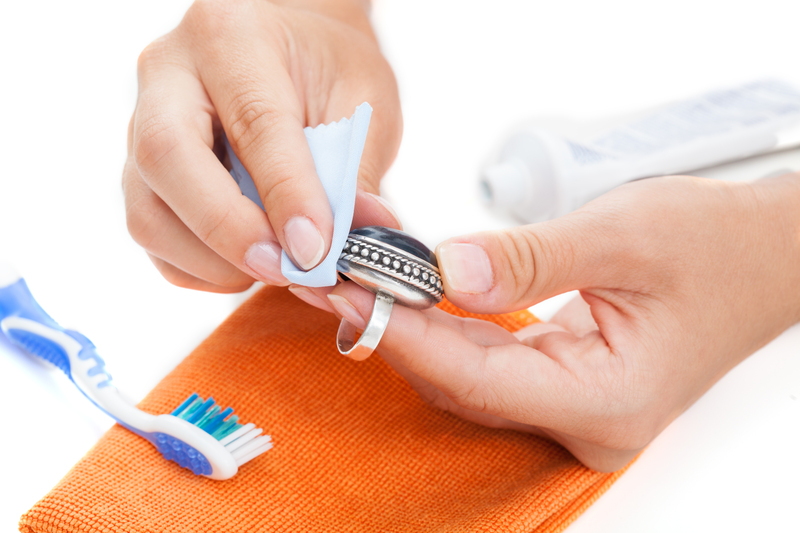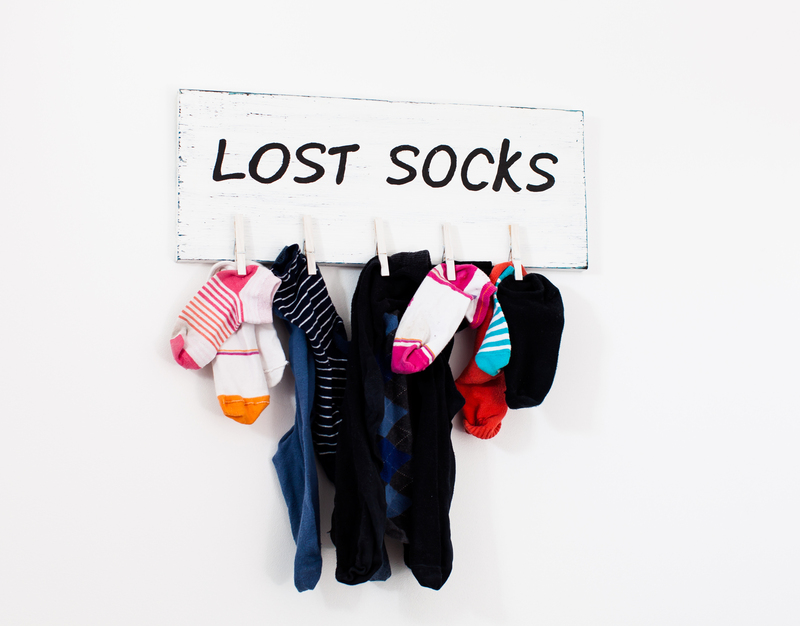The Ultimate Guide to Restoring Your Burnt Stovetop
Posted on 02/07/2025
The Ultimate Guide to Restoring Your Burnt Stovetop
Is your stovetop covered with stubborn burn marks, caked-on grease, or unsightly discolorations that just seem impossible to clean? Restoring a burnt stovetop to its former glory may seem like a daunting task, but with the right techniques, products, and a little elbow grease, you can make your stove sparkle again. In this comprehensive and SEO-optimized guide, we will walk you through the best practices, expert tips, and frequently asked questions for achieving a pristine cooking surface. Whether you own a glass stovetop, gas burners, or electric coils, this guide is your comprehensive solution for stovetop restoration.
Why Proper Stovetop Restoration Matters
A clean and immaculate stovetop is not just about aesthetics--it's also crucial for ensuring safe and efficient cooking. Burnt-on residues can interfere with heat distribution, damage your cookware, and even create fire hazards. Furthermore, restoring your burnt stovetop prolongs the lifespan of your appliance, supporting better hygiene in your kitchen and enhancing your overall cooking experience.

Understanding Stovetop Materials and Common Burn Issues
Not all stovetops are built the same! The approach you use depends largely on your stove's material and the nature of the burn marks.
Types of Stovetops
- Glass or Ceramic Cooktops: Sleek, modern, but susceptible to scratch and scorch marks.
- Stainless Steel Stovetops: Durable, easy to maintain, but can show stubborn discoloration.
- Gas Burners: Feature removable grates and cap burners; spills and burns are common around and under burner caps.
- Electric Coil Stovetops: Feature removable coiled elements and drip pans; stains can build up over time.
Common Burn Marks and Stains
- Spilled Food: Sugary or starchy overflows from sauces or boiling water rapidly harden into burnt patches.
- Charred Oil Stains: Oil spills lead to sticky, blackened stains especially near burners.
- Discoloration and Heat Stains: Continuous high heat can cause off-color patches, particularly on stainless steel and glass surfaces.
The Ultimate Step-by-Step Process to Restoring Your Burnt Stovetop
Step 1: Safety First!
- Always ensure your stovetop is completely cool and switched off before you start cleaning.
- If dealing with gas stoves, disconnect the gas supply for added safety.
- Wear gloves to protect your hands from harsh chemicals and sharp parts.
Step 2: Gather Your Restoration Supplies
What you need may vary based on stovetop type, but here's an inclusive list:
- Microfiber cloths
- Non-abrasive scrubbing pads or sponges
- Baking soda and white vinegar
- Lemon juice
- Dish soap
- Plastic or silicone scraper
- Glass stovetop cleaner or stainless steel polish
- Razor blade or oven cleaner (for heavy-duty restoration--use with caution)
Step 3: Remove Loose Debris
- Wipe away any crumbs, loose burnt bits, or debris with a dry microfiber cloth.
- For gas and electric coil stoves, remove burner grates, burner caps, and drip pans. Wash removable parts with hot soapy water and let them soak if needed.
Step 4: Soften Burnt-On Residue
For stubborn burns stuck to the surface:
- Glass/Ceramic Stovetops: Sprinkle baking soda generously over the burnt areas. Spray or pour white vinegar on top and allow the mixture to fizz and break down the scorch marks for about 10-15 minutes.
- Stainless Steel: Apply a paste of baking soda and water to stains. Let it sit; the baking soda acts as a gentle abrasive.
- Gas/Electric Stovetops: Submerge removable parts and pans in hot soapy water, letting them soak for up to 30 minutes. For the stovetop itself, use the baking soda-vinegar method.
Step 5: Gentle Scrubbing & Non-Abrasive Cleaning
- Use a non-scratch scrubbing pad or sponge to work loose the softened burn marks. For glass surfaces, a plastic scraper can help lift the residue without causing scratches.
- Avoid steel wool or abrasive pads--these can permanently damage your stovetop's finish!
- Wipe away loosened debris with a damp microfiber cloth and repeat as necessary on problem spots.
Step 6: Spot Treatment for Tough Burns and Discoloration
- For persistent spots on glass stovetops: Gently use a razor blade at a 45-degree angle to scrape off burnt residue. Do so carefully to avoid scratching.
- For stainless steel: Use a commercial stainless steel cleaner or a paste of baking soda and a splash of lemon juice. Polish in the direction of the grain.
- Electric coil burners: If the coils themselves have burnt spots, wipe them down with a damp cloth--not submerged! For removable coils, check your unit's manual for cleaning instructions.
Step 7: Rinse and Dry Thoroughly
- Use a clean, damp cloth to remove all remaining cleaning agents or burnt residue.
- Dry the entire stovetop with a microfiber towel to prevent water spots and streaking.
Step 8: Polish and Protect
- Glass and Ceramic Cooktops: Apply a specialized glass stovetop polish to protect against future burn marks and enhance shine.
- Stainless Steel: Buff with a small amount of stainless steel polish or even a drop of olive oil on a soft cloth for added protection and luster.
- Gas and Electric: Reassemble burners, grates, and drip pans. Ensure everything is fully dry before turning the units back on.
Homemade Stovetop Cleaning Solutions for Burnt-On Stains
DIY Stovetop Cleaner Recipe
Make your own powerful, eco-friendly cleaner--perfect for burnt stains:
- Mix 1 part white vinegar with 1 part water in a spray bottle. Add 1-2 tablespoons of baking soda.
- Spray generously onto *burnt stovetop* surfaces and let it sit for 15 minutes.
- Scrub with a soft brush or sponge. For an added fresh scent, mix in a few drops of lemon juice.
Natural Deodorizing Paste
For particularly stubborn odors or stains, make a paste of 3 parts baking soda to 1 part water. Layer it over the burnt area, let dry for several hours, then gently wipe clean.
How to Restore Burnt Stove Grates and Burner Caps
Grates and caps bear the brunt of stovetop burns. Here's how to tackle them:
- Soak grates and caps in a mixture of hot water and dish soap for 20-40 minutes.
- Scrub with a stiff-bristled brush to remove blackened patches.
- For deeper burns, sprinkle baking soda directly and add a few drops of vinegar. Allow the fizz to work before scrubbing again.
- For enameled or cast iron grates, avoid soaking overnight to prevent rusting.
- Dry thoroughly and place back on the stovetop.
Restoring a Burnt Glass Cooktop Without Scratching
Glass cooktops require a delicate touch to avoid scratches:
- Use a special glass cooktop scraper rather than a standard razor blade.
- Always apply cleaning agents and scrapers when the surface is wet or lubricated.
- Polish with a dedicated glass cooktop cream for best results.
- Never use steel wool or abrasive pads on glass surfaces!
Professional Products for Burnt Stovetop Restoration
- Bar Keepers Friend: Excellent for both stainless steel and glass surfaces. Sprinkle, add water, and gently scrub for fast burn removal.
- Weiman Cooktop Cleaner: Formulated specifically for glass stovetops--removes tough stains and leaves a bright finish.
- Magic Eraser: For light stains on coated surfaces, a gentle magic eraser can work wonders.
Tips to Prevent Burnt-On Messes in the Future
Now that you've put in the effort to restore your burnt stovetop, make maintenance easier with these prevention tips:
- Wipe spills immediately: Clean up food and liquid spills as soon as your stovetop cools to prevent burns from setting in.
- Use cookware of appropriate size: Oversized pots and pans can trap heat and cause scorching.
- Line drip pans: For electric stoves, use disposable foil liners to catch overflow and make cleanup easier.
- Regular deep cleans: Include a full stovetop cleaning in your monthly kitchen routine.
- Use splatter guards when frying or simmering to reduce oil and food deposits.

Frequently Asked Questions: Burnt Stovetop Restoration
Can you fix a burned glass cooktop?
Yes! With baking soda, vinegar, a safe razor scraper, and a little patience, most scorch marks and stains can be removed without scratching the glass surface.
What should you never use on a burnt stovetop?
Avoid steel wool pads, abrasive powders, and harsh chemicals like bleach or ammonia. They can etch, stain, or corrode the stovetop finish.
Is it safe to use oven cleaner on my cooktop?
Most oven cleaners are too abrasive for glass or stainless steel stovetops. Reserve them for grates or drip pans unless the manufacturer specifies they're safe for your specific cooktop surface.
How often should I clean my stovetop?
Ideally, wipe spills after each use, and deep clean your stovetop at least once a month to prevent build-up and burning.
Final Thoughts: Achieve a Like-New Stovetop with the Right Restoration Methods
Tackling a burnt stovetop doesn't need to be overwhelming. With the proper supplies, proven cleaning strategies, and a proactive maintenance routine, you can easily restore any damaged stovetop to a spotless, usable condition. Regular care will not only prevent future burn marks but will also ensure your kitchen remains a safe and pleasant place to prepare your favorite meals. Remember, each stovetop material has unique needs, so treat yours with care and always refer to the manufacturer's guidelines.
By following this ultimate guide to restoring your burnt stovetop, you'll enjoy a cleaner, more efficient, and longer-lasting cooking surface--plus peace of mind every time you fire up your stove!





